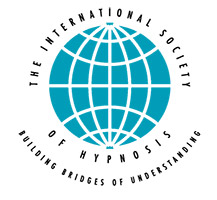
Pain duringsexualintercourse. There are many causes of dyspareunia, including vaginal infection or dryness. Treatment is directed toward the underlying cause and vaginal lubricant jelly can be of help.
Dyspareunia is painfulsexual intercourse, due to medical or psychological causes. The term is used almost exclusively in women, although the problem can also occur in men. The causes are often reversible, even when long-standing, but self-perpetuating pain is a factor after the original cause has been removed.
Dyspareunia is considered to be primarily a physical, rather than an emotional, problem until proven otherwise. In most instances of dyspareunia, there is an original physical cause. Extreme forms, in which the woman's pelvic floor musculature contracts involuntarily, is termedvaginismus.
Numerous medical causes of dyspareunia exist, ranging from infections candidiasis, chlamydia, trichomoniasis, urinary tract infections, endometriosis tumors, xerosis - dryness, especially after the menopause - and LSEA.
Dyspareunia may result from female genital mutilation, when the introitus has become too small for normal penetration - often worsened by scarring.
Physical Causes
Because there are numerous physical conditions that can contribute to pain during sexual encounters, a careful physical examination and medical history are always with such complaints. In women, common physical causes for coital discomfort include infections of the vagina, lower urinary tract, cervix, or fallopian tubes e.g., mycotic organisms - esp. candidiasis, chlamydia, trichomonas, coliform bacteria; endometriosis; surgical scar tissue - following episiotomy; and tumors.
In addition to infections and chemical causes of dyspareunia such as monilial organisms and herpes, anatomic conditions, such as hymenal remnants, can contribute to coital discomfort. Estrogen deficiency is a particularly common cause of sexual pain complaints among postmenopausal women, although vaginal dryness is often reported by lactating women as well.
Women undergoing radiation therapy for pelvic malignancy often experience severe dyspareunia due to the atrophy of the vaginal walls and their susceptibility to trauma. Vaginal dryness is sometimes seen in Sjögren's syndrome, an autoimmune disorder which characteristically attacks the exocrine glands that produce saliva and tears.
Dyspareunia is now believed to be one of the first symptoms of a disease called interstitial cystitis - IC. Patients may struggle with bladder pain and discomfort during or after sex. For men with IC, pain occurs at the moment of ejaculation and is focused at the tip of the penis. For women with IC, pain usually occurs the following day, the result of painful, spasming pelvic floor muscles. Interstitial cystitis patients also struggle with urinary frequency and/or urinary urgency.
Physical Causes in Men
In men, as in women, there are a number of physical factors that may cause sexual discomfort. Pain is sometimes experienced in the testicular or glans area of the penis immediately after ejaculation. Infections of the prostate, bladder, or seminal vesicles can lead to intense burning or itching sensations following ejaculation. Men suffering from interstitial cystitis may experience intense pain at the moment of ejaculation. Gonorrheal infections are sometimes associated with burning or sharp penile pains during ejaculation.
Urethritis or prostatitis can make genital stimulation painful or uncomfortable. Anatomic deformities of the penis, such as in Peyronie's disease, may also result in pain during coitus. One cause of painful intercourse is due to the painful retraction of a too-tight foreskin, occurring either during the first attempt at intercourse or subsequent to tightening or scarring following inflammation or local infection. During vigorous intercourse or masturbation, small tears may occur in the frenum of the foreskin and can be very painful.
A rare form of male dyspareunia - postejaculatory pain syndrome - is characterized by persistent and recurring pain in the genital organs during ejaculation or immediately thereafter. The painful sensations are experienced as sharp, stabbing, and/or burning. Although the duration of pain is usually brief, it can persist and be quite intense. Although the immediate cause of psychogenic postejaculatory pain syndrome is the involuntary painful spasm or cramping of certain pain-sensitive muscles in the male genital and reproductive organs, the excruciatingly painful muscle cramps may be attributable to a man’s conflict about ejaculating.
A pelvic floor disorder can also be the cause of pain during and after sex. Spasming, inflammed, overtoned or shortened pelvic muscles can result in the compression or sometimes the entrapment of the pudendal nerve. Guilt about sexual pleasure or about the paraphiliac nature of the erotic fantasies can lead to pain with orgasm. In other cases, men with liberal sexual attitudes might feel general resentment, or be angry at their current sexual partners for unconscious or conscious reasons.
Complaints of sexual pain - that is, dyspareunia orvulvodynia- typically fall into one of three categories - vulvar pain (pain at the opening or at the external genitalia), vaginal pain, or deep pain - or some combination of all three. There is some evidence for the existence of several subtypes of dyspareunia: vulvar vestibulitis (the most common type of premenopausal dyspareunia), vulvar orvaginal atrophy(which typically occurs postmenopausally), and deep dyspareunia or pelvic pain (associated with such gynecological conditions asendometriosis,and pelvic adhesions, inflammatory disease, or congestion).
Vulvar vestibulitis syndrome (VVS) is the most common subtype of vulvodynia affecting premenopausal women. It tends to be associated with a highly localized “burning” or “cutting” type of pain. The feelings of irritation and burning can persist for hours or days following sexual activity, engendering a sense of hopelessness anddepression.
The prevalence of VVS is quite high: the syndrome has been cited as affecting about 10%-15% of women seeking gynecological care. It is characterized by severe pain with attempted penetration of the vaginal introitus and complaints of tenderness with pressure within the vulvar vestibule. Usually there are no reports of pain with pressure to other surrounding areas of the vulva.
Diagnosis is readily made by the cotton-swab test, in which pressure is applied in a circular fashion around the vulvar vestibule to assess complaints of pain. Laboratory tests are used to exclude bacterial or viral infection, and a careful examination of the vulvo/vaginal area is conducted to assess whether anyatrophyis present.
VVS involves multiple tiny erythematous sores in the vulvar vestibule. A number of etiological factors may be involved, including subclinicalhuman papillomavirusinfection, chronic recurrentcandidiasis, or chronic recurrent bacterialvaginosis. Muscular causes have been implicated as well, since chronic vulvar pain may be the result of chronic hypertonic perivaginal muscles, leading to vaginal tightening and subsequent pain. Some investigators have postulated the existence of neurological causes such as vestibular neuralhyperplasia.
Finally, psychological factors may contribute to or exacerbate the problem, since the anticipation of pain often results in a conditioned spasmodic reflex along with sexual desire and arousal problems. Relationship problems are generally the result of chronic frustration, disappointment, and depression associated with the condition.
Vaginal atrophyas a source of dyspareunia is most frequently seen in postmenopausal women and is generally associated with estrogen deficiency.
Estrogendeficiency is associated with lubrication inadequacy, which can lead to painful friction during intercourse.
In women with VVS and vulvar/vaginal atrophy, the pain is associated with penetration or with discomfort in the anterior portion of the vagina. There are some women, however, who report deeper vaginal or pelvic pain. Little is known about these types of pain syndromes, except that they are thought to be associated with gynecological conditions such as endometriosis, pelvic adhesions, or inflammatory disease.








